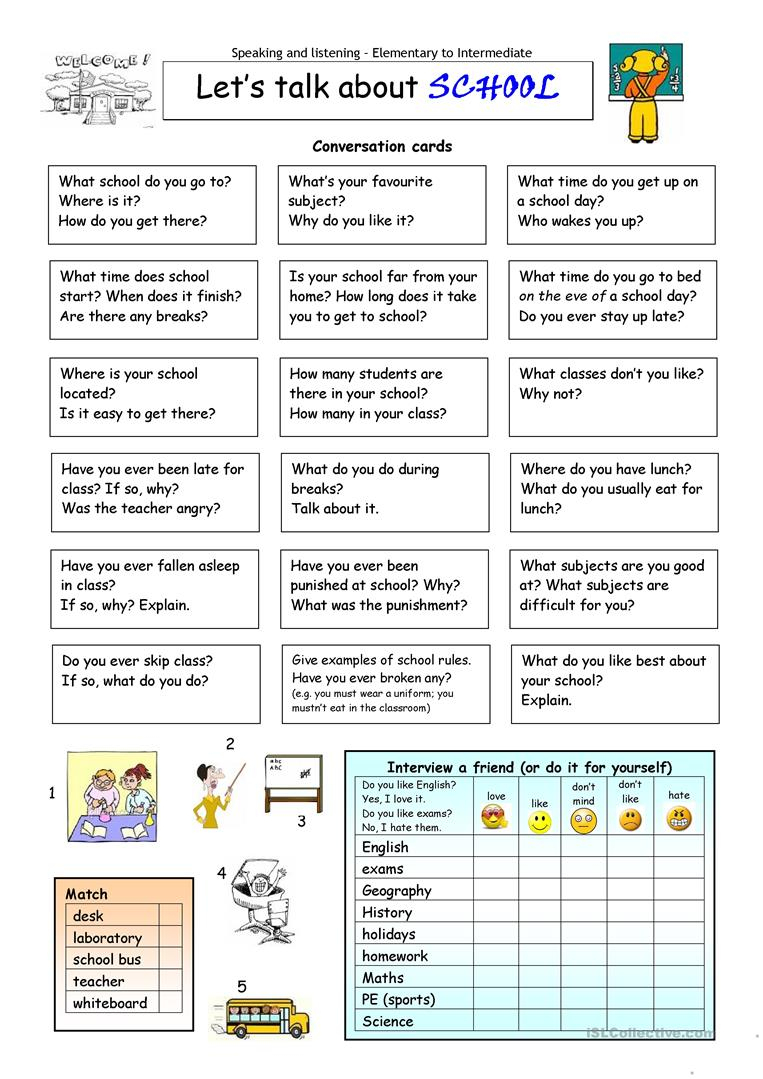
The Indispensable Role of High School ESL Worksheets in Fostering Language Acquisition
In an increasingly interconnected world, the ability to communicate effectively in English is more crucial than ever. For high school students who are English as a Second Language (ESL) learners, navigating the complexities of academic subjects, social interactions, and future career prospects in a new language can be a daunting challenge. While classroom instruction, interactive activities, and real-world exposure are fundamental, one often-underestimated tool plays a consistently vital role in reinforcing learning, providing targeted practice, and assessing progress: High School ESL worksheets. These structured learning materials, when designed and utilized effectively, become cornerstones of a comprehensive language acquisition program, offering tangible pathways to linguistic proficiency and academic success.
The high school years are a critical period for ESL students. They are not only grappling with advanced academic content across various subjects but also maturing socially and emotionally, often in a new cultural context. Unlike younger learners who might acquire language more intuitively through immersion, high school students require more explicit instruction and structured practice to master complex grammar, expand academic vocabulary, refine reading comprehension strategies, and develop sophisticated writing skills. This is precisely where High School ESL worksheets step in, providing a systematic and accessible means to address these diverse linguistic needs.
Diverse Types of High School ESL Worksheets for Comprehensive Learning
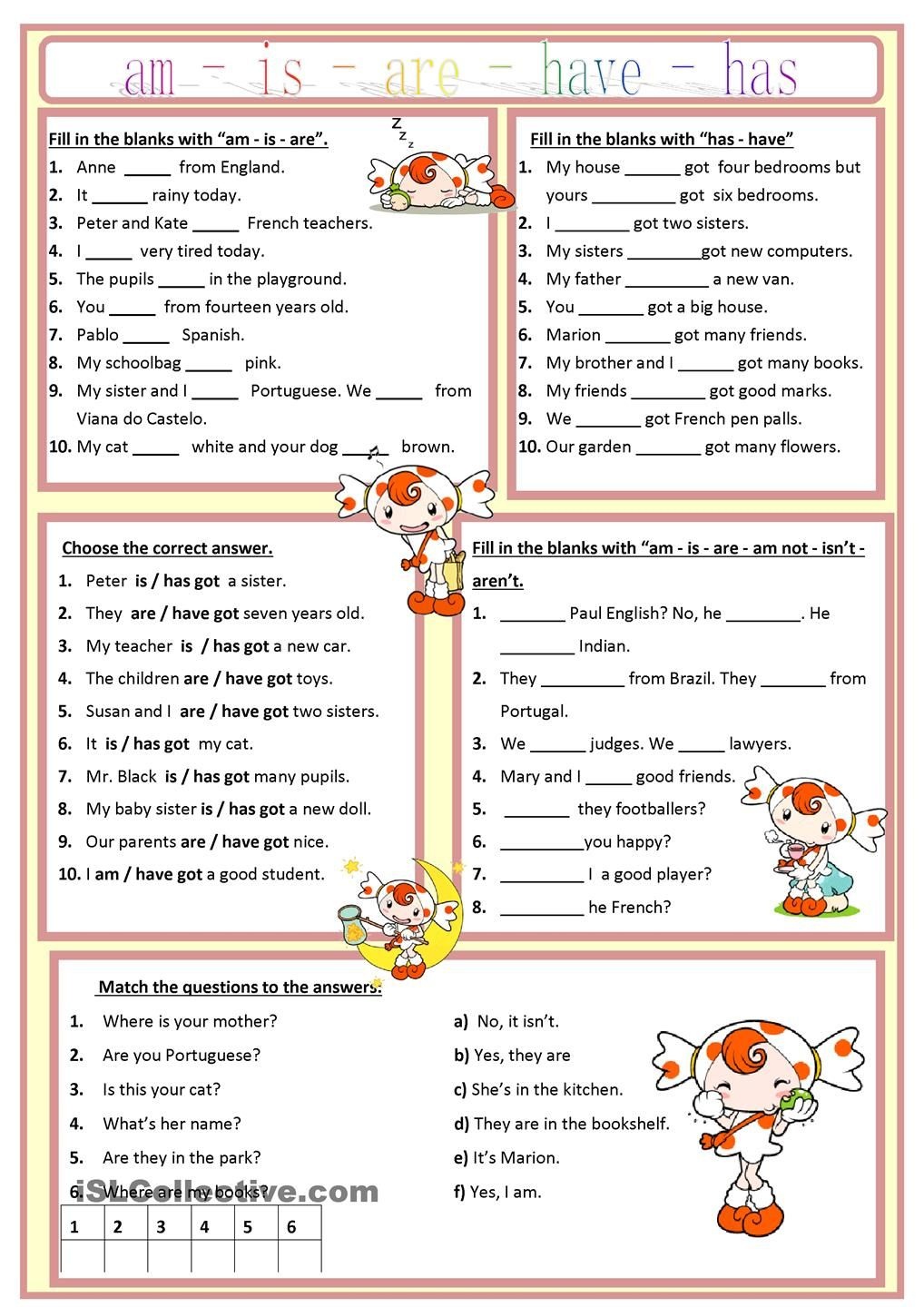
The versatility of ESL worksheets is one of their greatest strengths. They can be tailored to target specific language domains and skills, ensuring a well-rounded approach to language development.
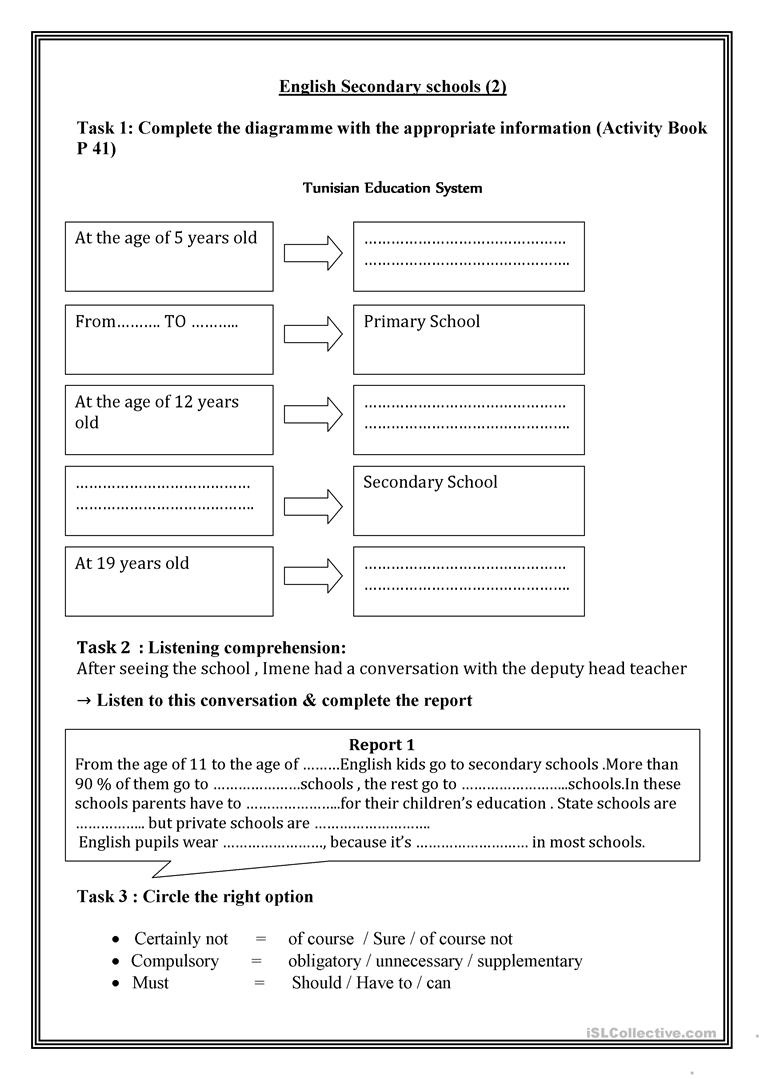
-

Grammar Worksheets: These are perhaps the most common and foundational type. High school ESL learners often struggle with advanced grammatical structures that are less common in basic conversational English. Worksheets can focus on:
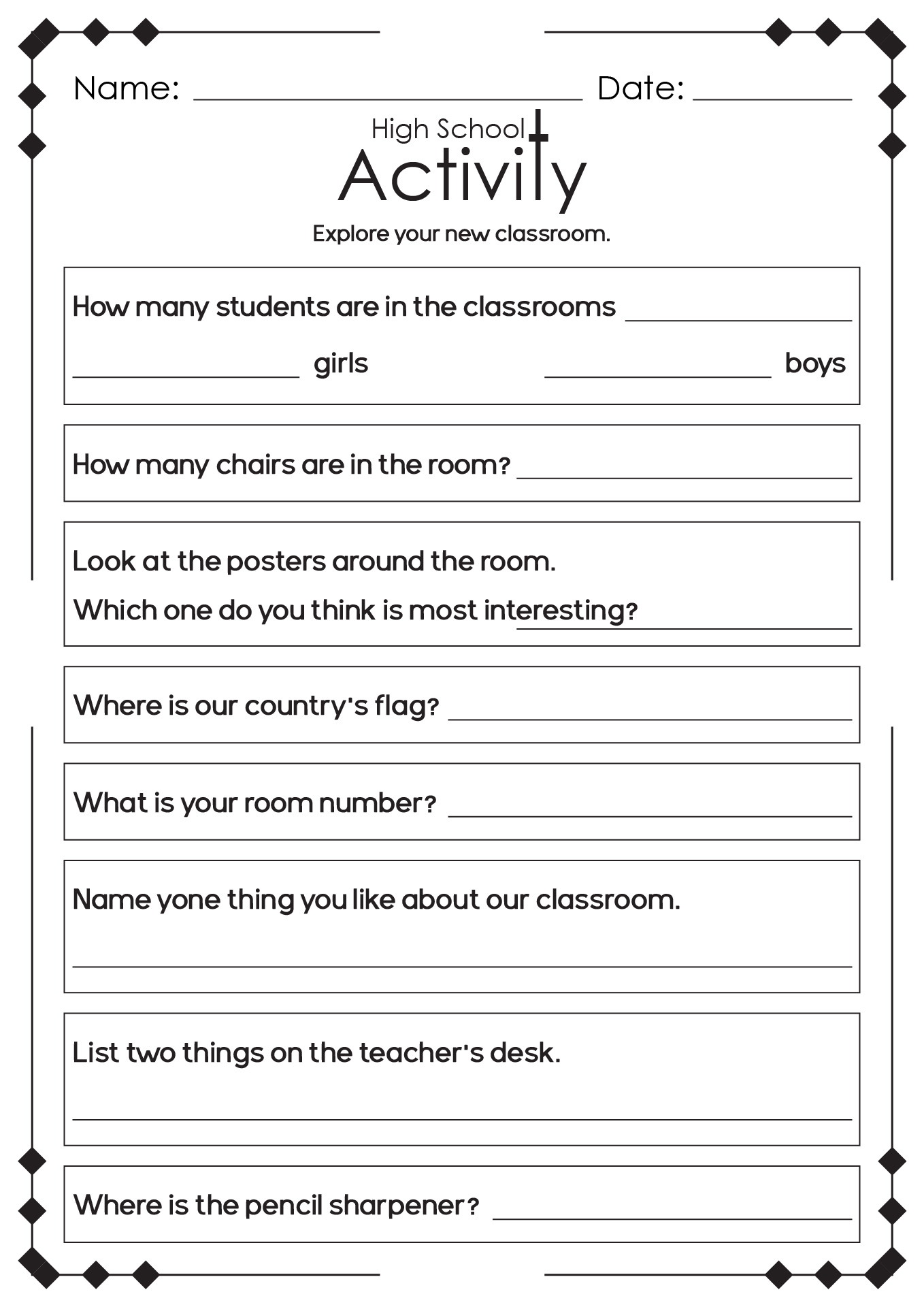
- Verb Tenses: Mastering present perfect, past perfect, future perfect, and conditional tenses.
- Sentence Structure: Practicing complex and compound sentences, relative clauses, and passive voice.
- Parts of Speech: Differentiating between tricky adjectives, adverbs, prepositions, and conjunctions.
- Punctuation: Ensuring correct comma usage, apostrophes, and quotation marks, which are vital for academic writing.
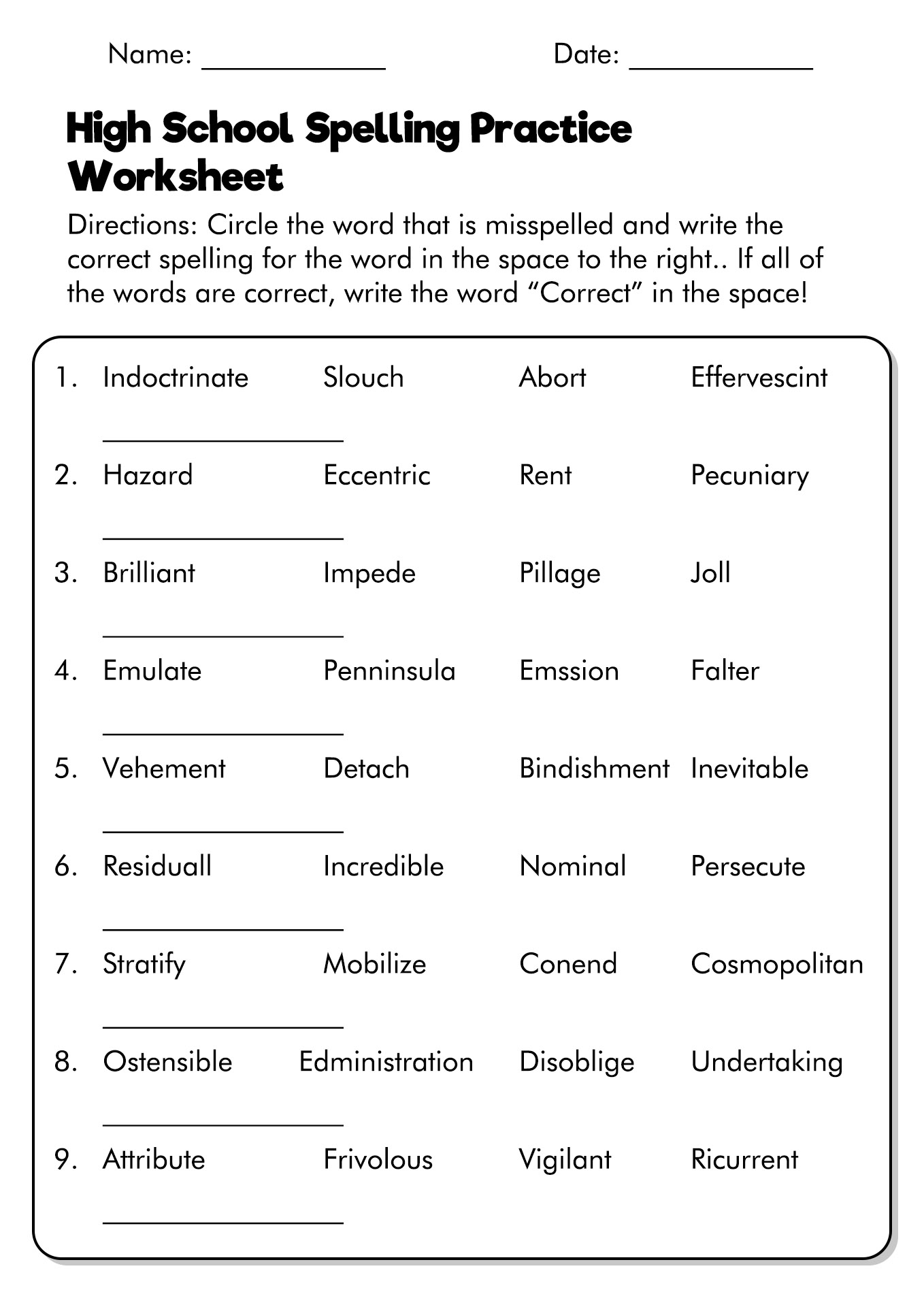
Grammar worksheets provide repetitive practice, helping students internalize rules and apply them accurately in their speaking and writing.
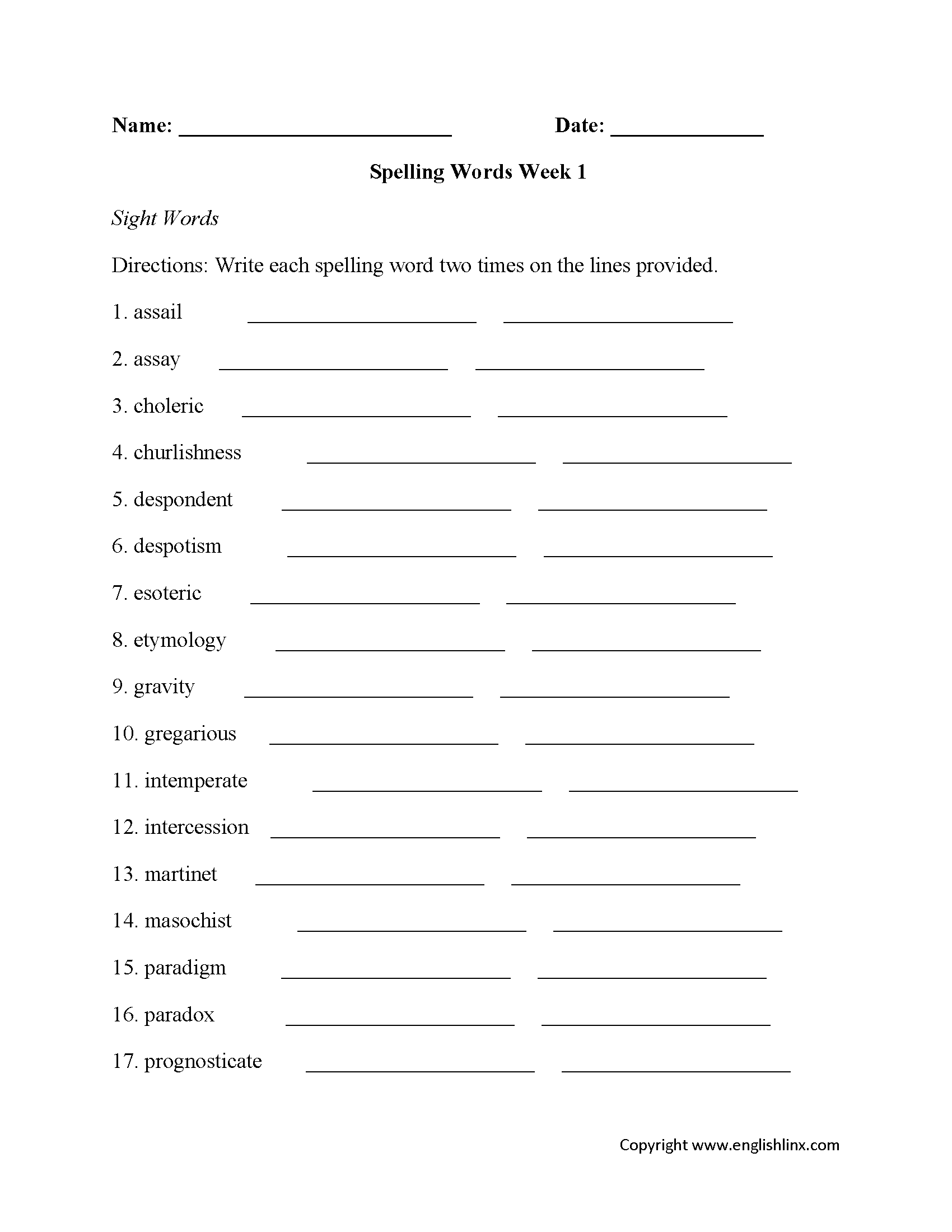
-

Vocabulary Worksheets: Building a robust vocabulary, especially academic vocabulary (Tier 2 and Tier 3 words), is paramount for high school success. Worksheets can facilitate this through:
- Context Clues: Exercises where students deduce word meanings from surrounding text.
- Synonyms and Antonyms: Expanding word knowledge by associating words with similar or opposite meanings.
- Word Families and Affixes: Understanding prefixes, suffixes, and root words to unlock the meaning of many new words.
- Thematic Vocabulary: Grouping words related to specific subjects (e.g., science, history, literature) to build content-area literacy.
- Collocations: Practicing common word pairings (e.g., "make a decision" vs. "do a decision").

-
Reading Comprehension Worksheets: High school students encounter a wide array of texts, from literary excerpts to scientific articles. Worksheets can help them develop critical reading skills by including:
- Main Idea and Detail Identification: Practicing distinguishing between central themes and supporting facts.
- Inference and Prediction: Encouraging students to "read between the lines" and anticipate outcomes.
- Summarization and Paraphrasing: Developing the ability to condense information and express it in their own words.
- Text Structure Analysis: Identifying cause-and-effect, comparison-contrast, problem-solution, and chronological order patterns.
- Critical Analysis: Prompting students to evaluate author’s purpose, bias, and persuasive techniques.
These worksheets often feature short passages followed by multiple-choice questions, true/false statements, or open-ended prompts.
-
Writing Practice Worksheets: Developing coherent and sophisticated written expression is a significant challenge for ESL learners. Worksheets can scaffold this process by focusing on:
- Sentence Combining and Expansion: Building more complex and descriptive sentences.
- Paragraph Structure: Practicing topic sentences, supporting details, and concluding sentences.
- Essay Outlines and Graphic Organizers: Providing frameworks for planning longer pieces of writing.
- Transitional Phrases: Equipping students with the vocabulary to connect ideas smoothly.
- Genre-Specific Writing: Practicing elements of narrative, expository, persuasive, or argumentative writing.
-
Listening Comprehension Worksheets: While often requiring an audio component, worksheets can guide listening practice through:
- Note-Taking Templates: Helping students organize information heard in lectures or dialogues.
- Fill-in-the-Blanks: Listening for specific words or phrases.
- Main Idea and Detail Questions: Assessing overall comprehension of spoken content.
- Inferential Listening: Drawing conclusions based on tone, intonation, or implied meaning.
-
Speaking & Pronunciation Worksheets (Supportive): While speaking is interactive, worksheets can provide prompts, scripts, or phonetic exercises to support oral language development. They can offer conversation starters, role-play scenarios, or even pronunciation drills focusing on specific sounds or stress patterns.
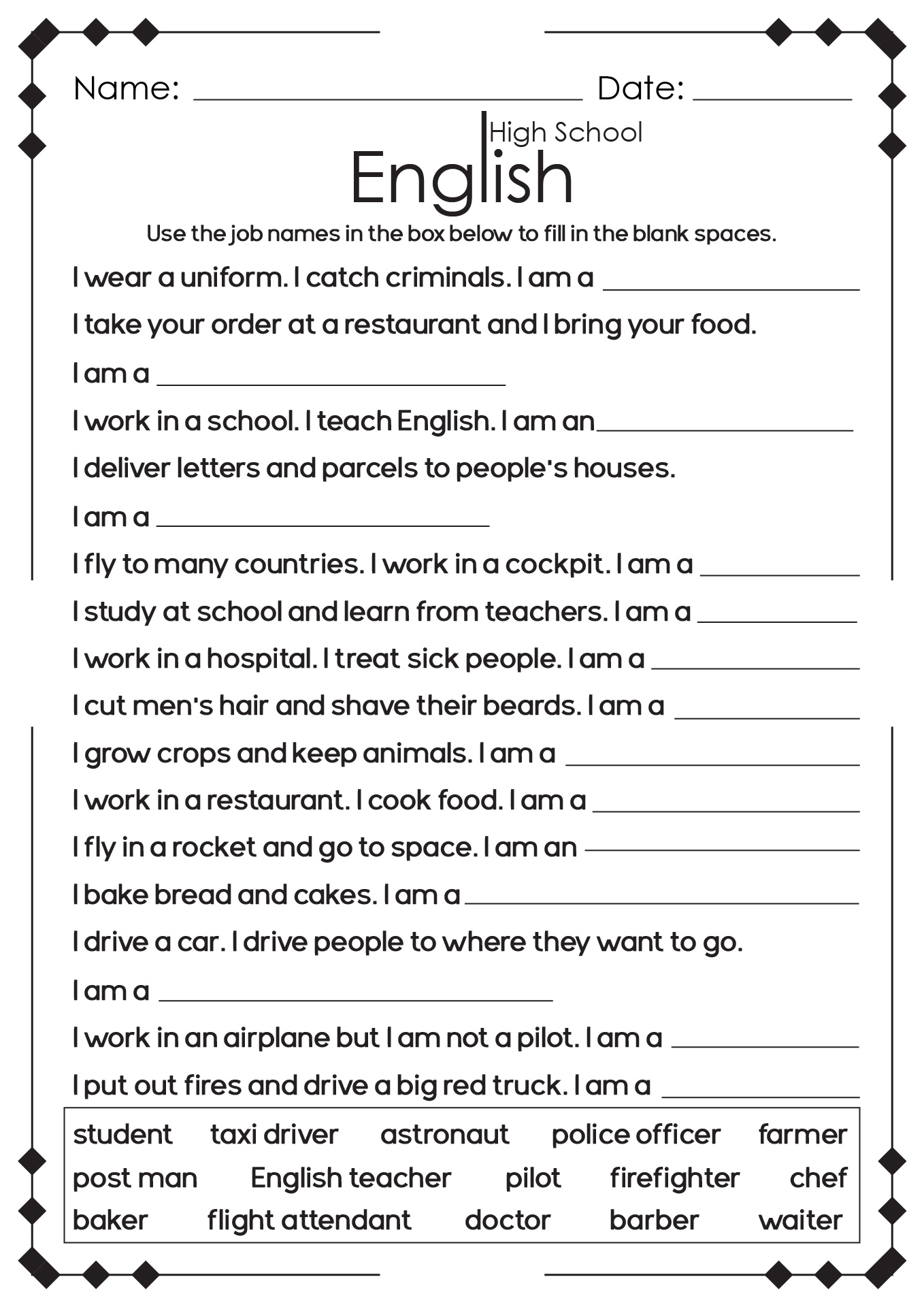
The Multifaceted Benefits of High School ESL Worksheets
The strategic integration of High School ESL worksheets into the curriculum offers numerous advantages for both students and educators:
- Reinforcement and Practice: Worksheets provide the repetition necessary for language skills to become automatic. Students can revisit concepts as many times as needed, solidifying their understanding outside of direct instruction.
- Independent Learning: They empower students to work at their own pace, fostering self-reliance and responsibility for their learning. This is particularly beneficial for differentiated instruction, allowing advanced learners to move ahead and those needing more support to take their time.
- Assessment and Feedback: Worksheets serve as quick, low-stakes assessment tools, enabling teachers to gauge student understanding of specific concepts. They provide tangible evidence of learning and highlight areas where further instruction or support is needed.
- Structured Learning: For students who thrive on routine and clear expectations, worksheets offer a predictable format. This structure can reduce anxiety, especially for newcomers still adjusting to a new educational system.
- Targeted Skill Development: Teachers can select or create worksheets that precisely target the specific grammar point, vocabulary set, or reading strategy that students are struggling with, ensuring efficient use of learning time.
- Bridging the Home-School Gap: Worksheets often serve as effective homework assignments, allowing students to continue their learning at home and providing an opportunity for family members to engage with their child’s education.
- Resource for Teachers: A well-organized collection of worksheets saves teachers valuable preparation time, providing ready-to-use materials for various learning objectives and student levels.
Characteristics of Effective High School ESL Worksheets
Not all worksheets are created equal. To maximize their impact, High School ESL worksheets should embody several key characteristics:
- Clear and Concise Instructions: Given that students are still acquiring English, instructions must be unambiguous, perhaps even including visuals or examples.
- Age-Appropriate and Culturally Relevant Content: Topics should resonate with high school students’ interests and experiences, avoiding childish themes or culturally insensitive content.
- Scaffolding: Worksheets should gradually increase in difficulty, building upon previously learned concepts. They might start with guided practice and move towards independent application.
- Authenticity: Whenever possible, use real-world materials (e.g., news headlines, excerpts from articles, product descriptions) to make the learning more relevant and engaging.
- Varied Formats: Incorporate different task types (e.g., matching, fill-in-the-blanks, multiple-choice, short answer, sentence creation) to maintain student interest and cater to diverse learning styles.
- Visually Appealing: Clean layouts, appropriate use of white space, and relevant images can make worksheets less intimidating and more inviting.
- Purposeful: Every exercise should have a clear learning objective, avoiding "busy work" that lacks educational value.
Best Practices for Utilizing High School ESL Worksheets
While the worksheets themselves are valuable, their effectiveness hinges on how teachers integrate them into their pedagogy.
- Balance with Interactive Activities: Worksheets should complement, not replace, communicative activities. They are best used to pre-teach, reinforce, or assess skills that will then be applied in speaking, listening, and collaborative tasks.
- Differentiate Instruction: Adapt worksheets to suit different proficiency levels within the classroom. Provide simplified versions for beginners and more challenging extensions for advanced learners.
- Provide Meaningful Feedback: Simply marking answers right or wrong is insufficient. Offer constructive feedback that explains why an answer is incorrect and guides students toward improvement. Peer correction can also be a valuable tool.
- Integrate with Technology: Leverage digital platforms that offer interactive worksheets, auto-grading, or multimedia elements (e.g., embedded audio/video).
- Encourage Student Ownership: Allow students some choice in which worksheets they complete or encourage them to track their own progress.
- Review and Reflect: Regularly assess the effectiveness of the worksheets used. Are students learning from them? Are they engaging? Adjust your resources based on student performance and feedback.
- Create Your Own When Necessary: While many excellent pre-made worksheets exist, sometimes the most effective ones are those tailor-made to the specific needs and interests of your current students.
Conclusion
In the dynamic and demanding environment of high school, High School ESL worksheets serve as an indispensable tool for educators striving to support their English language learners. Far from being mere busywork, these structured materials provide targeted practice, reinforce complex concepts, and offer valuable opportunities for independent learning and assessment. When thoughtfully designed and strategically implemented, they empower students to build foundational language skills, gain confidence, and ultimately achieve academic and social success in their new linguistic environment. By recognizing and maximizing the potential of these versatile resources, teachers can ensure that their ESL students are well-equipped to thrive in the classroom and beyond.
